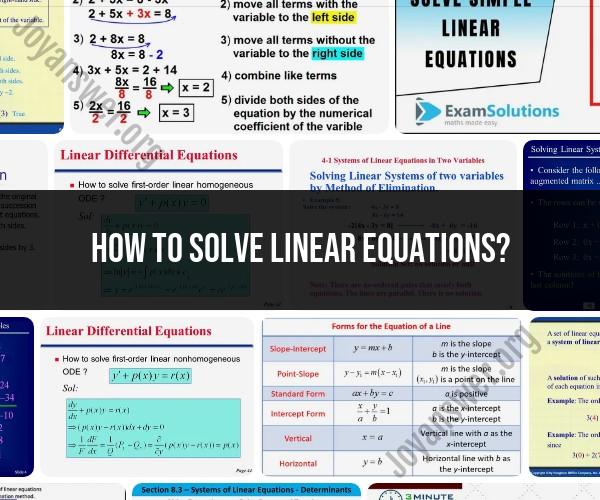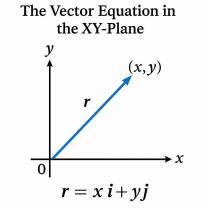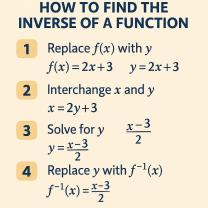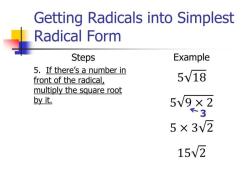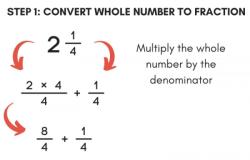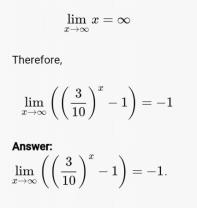How to solve linear equations?
Solving Linear Equations: Methods and Techniques
Solving linear equations is a fundamental skill in mathematics that involves finding the values of variables that satisfy the given equation. Linear equations are equations of the form ax + b = c, where a, b, and c are constants, and x is the variable to be solved for. There are several methods and techniques to solve linear equations:
1. Addition and Subtraction:
For equations with terms involving x on one side, isolate x by adding or subtracting constants to both sides until x is alone on one side.
2. Multiplication and Division:
Multiply or divide both sides of the equation by a constant to isolate x. Remember to perform the same operation on both sides to maintain the equation's balance.
3. Distributive Property:
Use the distributive property to simplify equations before solving. For example, ax + bx = c can be simplified to (a + b)x = c.
4. Combine Like Terms:
If the equation has terms with the same variable, combine them before proceeding. This simplifies the equation and makes solving for x easier.
5. Variables on Both Sides:
If the equation has terms with x on both sides, move all x terms to one side and constants to the other side. Then, use addition, subtraction, multiplication, or division to isolate x.
6. Fractional Coefficients:
If the coefficients are fractions, you can clear fractions by multiplying both sides of the equation by the least common multiple (LCM) of the denominators.
7. Check Your Solution:
After finding the solution for x, plug it back into the original equation to verify its correctness.
8. Word Problems:
Translate word problems into linear equations and solve them using the above techniques. Define variables, set up equations, and solve for the unknown.
Remember that the goal is to isolate x to determine its value. The specific method you use may depend on the equation's complexity and the desired outcome.
